-
History & Society
- Education in Pre-war Hong Kong
- History of Taikoo Sugar Refinery
- Hong Kong Products Exhibition
- Local Festivals Around the Year
- Post-war Industries
- Pre-war Industry
- The Hong Kong Jockey Club Archives
- Tin Hau Festival
- Memories We Share: Hong Kong in the 1960s and 1970s
- History in Miniature: The 150th Anniversary of Stamp Issuance in Hong Kong
- A Partnership with the People: KAAA and Post-war Agricultural Hong Kong
- The Oral Legacies (I) - Intangible Cultural Heritage of Hong Kong
- Hong Kong Currency
- Hong Kong, Benevolent City: Tung Wah and the Growth of Chinese Communities
- The Oral Legacies Series II: the Representative List of the Intangible Cultural Heritage of Hong Kong
- Braving the Storm: Hong Kong under Japanese Occupation
- A Century of Fashion: Hong Kong Cheongsam Story
Geography & EnvironmentArt & Culture- Calendar Posters of Kwan Wai-nung
- Festival of Hong Kong
- Ho Sau: Poetic Photography of Daily Life
- Hong Kong Cemetery
- Sketches by Kong Kai-ming
- The Culture of Bamboo Scaffolding
- The Legend of Silk and Wood: A Hong Kong Qin Story
- Journeys of Leung Ping Kwan
- From Soya Bean Milk To Pu'er Tea
- Applauding Hong Kong Pop Legend: Roman Tam
- 他 FASHION 傳奇 EDDIE LAU 她 IMAGE 百變 劉培基
- A Eulogy of Hong Kong Landscape in Painting: The Art of Huang Bore
- Imprint of the Heart: Artistic Journey of Huang Xinbo
- Porcelain and Painting
- A Voice for the Ages, a Master of his Art – A Tribute to Lam Kar Sing
- Memories of Renowned Lyricist: Richard Lam Chun Keung's Manuscripts
- Seal Carving in Lingnan
- Literary Giant - Jin Yong and Louis Cha
Communication & Media- Hong Kong Historical Postcards
- Shaw Brothers’ Movies
- Transcending Space and Time – Early Cinematic Experience of Hong Kong
- Remembrance of the Avant-Garde: Archival Camera Collection
- Down Memory Lane: Movie Theatres of the Olden Days
- 90 Years of Public Service Broadcasting in Hong Kong
- Multifarious Arrays of Weaponry in Hong Kong Cinema
-
History & SocietyGeography & EnvironmentArt & Culture
-
View Oral History RecordsFeatured StoriesAbout Hong Kong Voices
-
Hong Kong Memory
- Collection
- All Items
- Manufacturing Industries
Recently VisitedManufacturing Industries
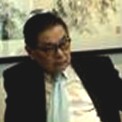
- The different brands’ characteristics of The China Paint Manufacturing Company and the founding ...
The China Paint Manufacturing Company tailored different product types to fit with the needs of different types of users. The “Flower” brand is designed for do-it-itself users while the “Giraffe” brand is designed for professional users. The company also used Giraffe brand for toy paint at the beginning, which later changed to a new brand, the Toy brand. Toy brand was promoted as a safe and non-toxic product line. Nowadays, the company still marketed the three brands in Hong Kong, but in China it promoted a range of product brands at different regions.
Since 1932, the company had been using “Flower” as the company’s brandname, which was called “Chrysanthemum”. The brand logo was previously a portrait of chrysanthemum flower. Since Paul Lam joined the company, the logo was changed to the current mode of a pictorial flower to make it look trendy. Now, the brandname was called “Flower” and the product quality had been improved.
Initially the quality of the emulsion paint was not satisfactory because the technology applied was too low. Since it committed to a collaborative agreement with Sherwin William Company, China Paint knew how to apply additives properly in the mixing stage to improve product quality.
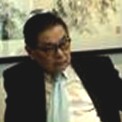
- The sales distribution of The China Paint Manufacturing Company in Hong Kong
The products of China Paint Manufacturing Company were promoted and sold through hardware stores and distributors. The hardware stores in the public estates were small, with limited space. In order to increase the motivation of the stores to showcase China Paint’s products, the company had to advertise its products through mass media such as television commercials, to attract the attention of the general public.
Paul Lam explained that the users could be classified as do-it-yourself users, construction contractors and professional masters. The company increased its competitiveness by tailoring different brands to the needs of users. “Flower” targeted at do-it-yourself users. The most popular products were silver paint and small cans of paint. “Giraffe” targeted at contractors and professional users, with the most popular products being the lacquer.
Since sales agents sourced products from distributors, China Paint had to invest in commercial advertising to increase its popularity, so that the distributors became more motivated to place larger orders to the company. As China Paint was willing to design tailor-made products to meet the needs of its customers, these customers placed orders directly to the company. Usually the volume of these orders was sizeable, hence the company would send technicians to stay at the customer’s factory to provide after-sale service.
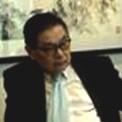
- The China Paint Manufacturing Company at Hong Kong Brands and Products Expo
The China Paint Manufacturing Company used various channels to maintain its brand image through television commercials, giant posters on building walls and Hong Kong Brands and Products Expo. The company joined the Expo in order for promoting its products rather than direct sales. However in 2009, the company began to sell paint during the Expo. It also provided delivery service that allowed consumers to pick up the products at specific point of sale.
When he was a young boy, Paul Lam had visited the old form of Hong Kong Brands and Products Expo which were held before 1974. The lively atmosphere there made him feel it like a carnival. The company’s booth was specially designed to attract the attention of the visitors. The company had arranged a demonstration of paintbrush by robot machine at the booth to attract visitors, as a way to promote its products.

- The safety facility of the paint factory
Solvent was the the major cause of accident in paint industry. The Kwun Tong factory of China Paint Manufactory Company was located in an industrial building of 4 to 5 levels. The factory workshop had limited space for storing solvent. Therefore, the factory built five underground tanks to store the dangerous solvents. Solvents were pumped out from the tanks when they were need for production. Gilla Paints Work had a fire as it had stored a large quantity of chemical materials in its factory. Nitrocellulose, a solvent for paint production, had a low ignition point and so it easily caught fire. Nitrocellulose was the major cause of fire in paint factory. There was a minor fire in the Kwun Tong factory which was quickly put out by the staff. There were fires at the factory at Arran Street, Mongkok because the workers were careless in handling nitrocellulose. In 1991, the China Ministry of Defense had a serious nitrocellulose explosion. As a result, the Chinese government imposed stringent regulation upon the storage of nitrocellulose. The legal regulation of storing nitrocellulose was as stringent as that of explosive and blasting products.
There were not major explosive accidents in Hong Kong. It was because the paint factories in Hong Kong were designed and built under the Hong Kong building regulations. Architects had to comply with government regulations and find appropriate locations to store solvents. Therefore, most of the paint factories in Hong Kong had shared similar design.
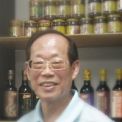
- Memories of Amoy’s stall at Hong Kong Product Expo in Tsim Sha Tsui.
Wong Wing Man also helped out Amoy’s stalls at the Hong Kong Products Expos (HKPE) held in Tsim Sha Tsui, taking charge of operating the machines for transporting cans and for launching flying saucers. Flying saucers were ejected once every half an hour and attracted big audiences. A few Expos were held in Tsim Sha Tsui in the 1950s and Wong Wing Man worked on Amoy’s stalls at around this time. Many people liked to buy Amoy’s soy sauce here and the company also gave away tens of thousands of small souvenir bottles free of charge each day. People also liked to buy canned dace with salted black beans and pig’s trotters with gingers. At that time, no other company in Hong Kong produced canned dace with salted black beans. In those years, Amoy was a very big name locally and its boss Huang Du Xiu had served as Chairman of the Chinese Manufacturers Association. As a result, he always demanded the staff manning Amoy’s stall do their very best.
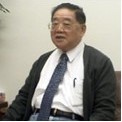
- The decline of Hong Kong textile industry
After the 1970s, Taiwan and Korea started to develop their spinning industries which posed competition to Hong Kong's spinners. The land where the spinners sat became more valuable which also attracted the owners to sell their land for profits. Spinning is a capital intensive industry. Most of the spinners need to have their own factories, which need dust and air-conditioning facilities. This makes it a costly exercise if the factory needs to move from one location to another. Central Textiles' factory in Zhanjiang only measured to 20,000 spindles, which worried Cheng as he was afraid it cannot withstand the competition from other mainland spinners in the long run.
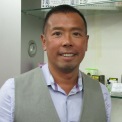
- How Hoe Hin leveraged unique promotional practices such as hiring celebrity spokespersons, sponso...
In the old days, Gan Fock Wai’s father had good connection with many Cantonese opera artists and movie stars such as Sun Ma Sze Tsang, Chan Po Chu and Wu Fung. He even pledged brotherhood with top film directors who were happy to allow Pak Fah Yeow billboards to appear in their movies, as a way to promote the product brand. Back then, a lot of Cantonese opera artists and movie stars loved using Hoe Hin products. Those who are still alive today remain very supportive to Pak Fah Yeow. In the 1970s, Hoe Hin invited Teresa Teng to serve as Hoe Hin’s Charity Queen. Teresa was about 17 years old at that time and had just come to Hong Kong for further development not long after she started her career in entertainment. Gan Fock Wai knew Teresa well and the two young people had played table tennis together when Gan was in Primary Five and Six. Gan Fock Wai thought his father had a very good business mind and used a lot of progressive ideas to successfully transform a simple medicated oil into a best-selling brand.
In order to successfully market Hoe Hin products such as Pak Fah Yeow, Gan Fock Wai began trying out new ways of promotion. To this end, he put more emphasis on repositioning Pak Fah Yeow as a multi-purpose product whose usefulness went far beyond that of regular pharmaceuticals. In expanding its uses, Gan Fock Wai explained that if Pak Fah Yeow was marketed as a medicine, people would use it every time they felt unwell because of headaches, mosquito stings or insect bites. Going beyond a purely pharmaceutical positioning, Gan Fock Wai told people that Hoe Hin’s star product could be used to refresh the complexion, relieve emotional tension and even soothe heat stroke or dizziness while one waited for the bus or did the Christmas shopping! In Hong Kong, Hoe Hin had registered Pak Fah Yeow as a proprietary Chinese medicine. While it focused on the product’s extensive applications in its promotional efforts, the company never exaggerated its curative effects. Gan Fock Wai hoped to expand the uses of the brand so that consumers would pop a bottle in their purse or pocket to take with them for their own use or even help others while out and about. Examples of the latter type of usage could include giving some Pak Fah Yeow to a stranger in the street who was feeling discomfort or heat stroke. Emphasising such versatility was a sure way of helping to increase sales.
Gan Fock Wai describes that he had inherited his father's practice of never forgetting to convey a positive message in Hoe Hin’s promotional materials. About 10 years ago, Hoe Hin launched a series of TV commercials which were on show immediately before the news reports on two free-to-air local TV stations. Each day Hoe Hin sent a message featured a slightly different jingle such as “Letting Go Is Happiness”. The company also sponsored 13 episodes of Commercial Radio Hong Kong’s popular Spiritual Environmentalism programme. Occasionally, Gan Fock Wai hosted the show himself, inviting different guests to share uplifting spiritual stories and their wise advice about life.
Many years ago, Gan Fock Wai served as the lead singer on popular Hoe Hin commercials, such as “Go Fly”. Four years ago he returned to the recording studio to record “Love 80 Years More” to celebrate Hoe Hin’s 80th anniversary. Beginning in the 1980s, Gan Fock Wai had released several albums, initially singing for fun. He later learned to love music even more and began using it to convey positive messages. In last Lunar New Year Fair, Gan Fock Wai sold an album called “Music Recycle” to raise charity funds for Friends of the Earth. The album mainly featured him re-singing old songs aimed at reminding fans to recycle and reuse. The song “Go! Go! Go!” was intended to convey a message about the environment. Gan Fock Wai later planned to record a new album on behalf of the Society for Abandoned Animals to help call for the better protection of animals.
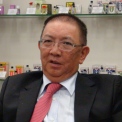
- Pak Fah Yeow as a Family Formula
The formulation was based on weight. Ingredients were measured on old-style balancing scales. Ingredients included menthol, camphor, lavender, eucalyptus, peppermint, etc. They were imported from around the world including Australia, China, India, etc. The formula remained largely unchanged to maintain the same smell of Pak Fah Yeow. Yet the company gave up some potential markets due to the restriction by the local government against certain chemical components. Gan preferred to keep the same formula because otherwise it would no longer have the unique smell of Pak Fah Yeow.
The mixing of the ingredients used to be carried out only by Gan’s grandfather and grandmother at the back of the house. This ensured the formula to be kept as a secret from the workers. Modern technology allows a close prediction of the formula by chemical assay, so now building up a good brand name is of greater importance.
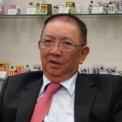
- Pak Fah Yeow participation in the Product Exhibition
Gan’s grandfather mainly used the trade fair (products exhibitions) to build up the image of Pak Fah Yeow. Pak Fah Yeow was an active participant in the trade fair from the 1950s to 1970s. Gan’s grandfather targeted at the general public to promote the product. He was eager to win the first prizes in the fair to increase the brand’s popularity. He tried to build the biggest and the most eye-catching booth in a traditional Chinese style with good lighting. He also knew a lot of movie actors and actresses so he engaged the actresses as charity queens at the booth for promotion. The charity queens did not parade on stage, they just stood at the booth and collected votes from visitors. He always managed to win most of the titles: the best booth design and the best charity queen representative of Pak Fah Yeow. He also gave away free gifts such as hot water flasks and doll-shaped-bottle editions to bigger buyers. The aim of participating in the trade fairs was not for the sales profit but for the exposure to the public.

- Innovations made by second-generation: product research and management culture
KL Sun explained how the second generation ran Kin Hip differently from their predecessor from two perspectives: product research and management culture.
(1) Product research: Sun Kin Chao relied on his own insights and judgments when introducing new products, which tended to be more profitable given the larger market and less competition in the early period. Sun Kin Chao often hung around in department stores, outlets and shopping malls to observe the different models of products available in the market. He then modified them in his own products. In 1970, with reference to two models of charcoal grill, Sun Kin Chao took advantage of their good ventilating and soot fending power and introduced a double-tray charcoal grill which sold well and remained popular till now. At the time of the handover to the second generation, the market differed from that of the 1950s and 60s. KL Sun put a great emphasis on market research and data analysis. He would never proceed to tooling and prototyping without adequate customer feedback. Recently Kin Hip introduced a cold drink cup equipped with an ice column, which could prevent lemonades from warming up again or the need for ice cubes. This product was a smash in the market. Since 1984, Sun Kin Chao had faded out of the operation of Kin Hip, yet he kept thinking about new products and occasionally inspected the factory to offer advice.
(2) Management culture: Sun Kin Chao adopted a paternalistic approach in management and made decisions with personal judgments. His subordinates, for the most part, were awed by his authoritativeness. His successor KL Sun decentralized management and involved senior staff members in the decision making process. He was revered rather than feared by his subordinates. When he first returned to Hong Kong for the succession, he spent most of his time in the workshop, urging the workers to work with enthusiasm. Now he had lessened his involvement in daily operation to facilitate the gradual participation by the third generation. KL Sun believed that he played a technical and managerial role, and was more devoted to the policy and strategy of the enterprise comparing with the first generation.
Copyright © 2012 Hong Kong Memory. All rights reserved.
| Set Name |





